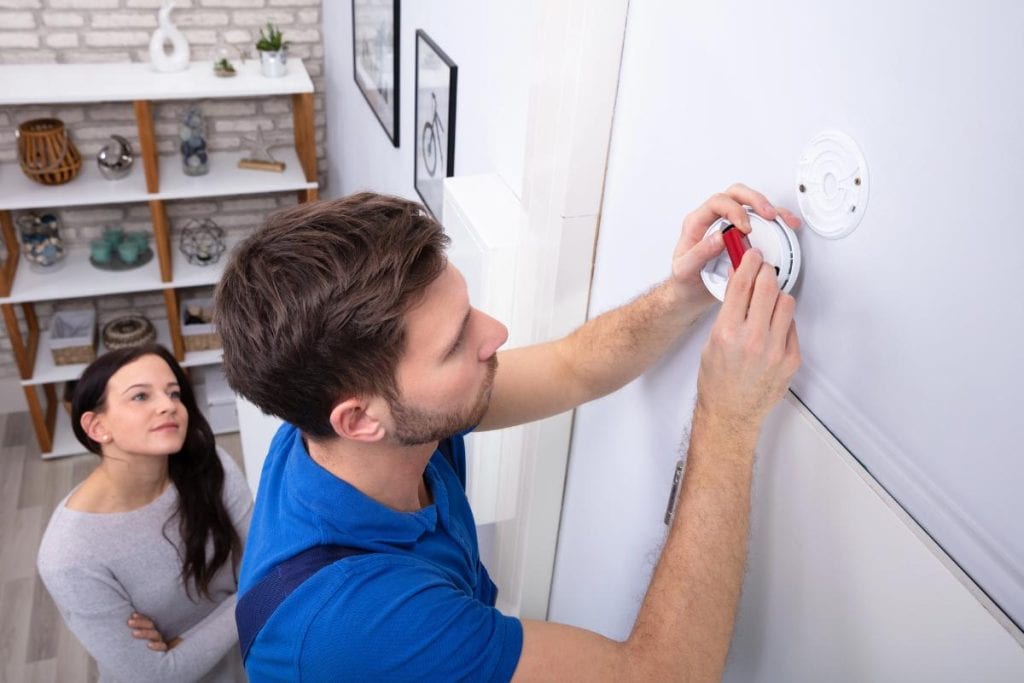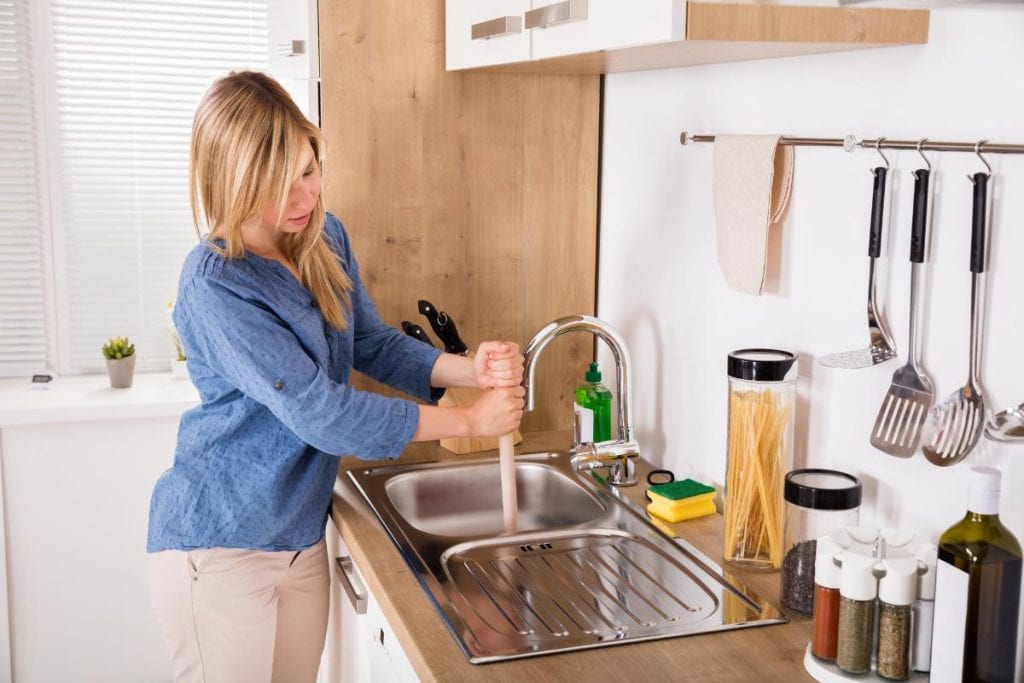When it comes to creating a comfortable living environment, safety and health should be top priorities. While we often hear about these measures in the workplace, health and safety at home can sometimes go unchecked. After all, your living space should be a sanctuary where you and your family can relax and thrive.
With some thoughtful adjustments and regular maintenance, you can significantly improve your home’s safety and promote a healthier lifestyle. Let’s explore some practical ways to enhance your home environment.

Remove Hazards from Your Home
The first step in creating a safer home is identifying and removing potential hazards. Take a thorough walk through your house, looking at each room with fresh eyes. Start by addressing tripping hazards like loose rugs, electrical cords crossing walkways, or clutter on the floor. These simple fixes can prevent falls, which are a leading cause of home injuries.
Next, check for sharp edges, especially on furniture at eye level for children. Consider adding corner guards to tables or replacing furniture with rounded edges. Ensure that all bookcases, dressers, and TVs are secure and won’t tip over, especially if you have young children or live in an earthquake-prone area.
Don’t forget about chemical hazards. Store cleaning products, medications, and other potentially harmful substances out of reach of children and pets. Use locked cabinets or high shelves to keep these items secure. Lastly, keep flammable items away from heat sources and ensure proper storage of combustible materials to reduce fire risks.
Check Your Carbon Monoxide Detector
Carbon monoxide (CO) is often called the “silent killer” because it’s odorless, colorless, and potentially lethal. This gas can be produced by any fuel-burning appliance, including furnaces, water heaters, and fireplaces. To protect your family, install CO detectors on every level of your home, especially near sleeping areas.
Make it a habit to test your CO detectors monthly and replace batteries at least once a year. Most models have a test button that you can press to ensure your carbon monoxide detector is fully functioning. It’s also important to replace the entire unit every 5-7 years, or according to the manufacturer’s instructions, as the sensors can degrade over time.
Familiarize yourself and your family with the symptoms of CO poisoning, which include headache, dizziness, weakness, nausea, and confusion. If your CO detector ever goes off, evacuate your home immediately and call emergency services. Don’t assume it’s a false alarm – your life could depend on taking quick action.
Test Smoke Alarms Regularly
Smoke alarms are your first line of defense against fire, but they’re only effective if they’re working properly. Install smoke alarms on every level of your home, inside bedrooms, and outside sleeping areas. This comprehensive coverage ensures that you’ll be alerted to a fire no matter where it starts in your home. Along with regular smoke alarm checks, it’s also important to stay informed about kitchen fire safety tips, as cooking is one of the leading causes of household fires.
Testing all smoke alarms monthly is critical. Simply press the test button and wait for the loud alarm sound. If you don’t hear the alarm or it’s weak, replace the batteries immediately. For battery-powered alarms, it’s a good practice to replace the batteries at least once a year, or whenever the alarm chirps to indicate low battery.
Keep in mind that even if your alarms seem to be working fine, they don’t last forever. Replace all smoke alarms every 10 years to ensure you have the most up-to-date and reliable fire detection. Consider investing in interconnected smoke alarms – when one detects smoke, they all sound the alarm, providing the earliest possible warning throughout your home.
Bring Nature Indoors with House Plants
Adding plants to your home decor does more than just enhance its visual appeal. House plants can actually improve your indoor air quality and boost your overall well-being. Many plants, like spider plants and peace lilies, can help remove indoor air pollutants, acting as natural air purifiers.
Plants also release moisture into the air, which can help maintain optimal humidity levels in your home. This is particularly beneficial during dry winter months or in arid climates. The presence of greenery has been shown to reduce stress and increase feelings of well-being, making your home a more relaxing and enjoyable space.
When choosing plants, consider factors like available light, your ability to care for them, and whether they’re safe for pets if you have any.
Conduct Regular Safety Inspections
Make it a habit to perform regular safety checks around your home. This can help you catch potential issues before they become serious problems. Start by checking for loose railings on stairs and balconies. Wobbly railings can be a serious fall hazard, especially for children and older adults.
Inspect electrical cords for fraying or damage, which can pose both fire and shock hazards. Replace any cords that show signs of wear immediately. Look for signs of water damage or leaks, especially around windows and under sinks. Addressing water issues promptly can prevent mold growth and structural damage.
Test ground fault circuit interrupters (GFCIs) in bathrooms and kitchens monthly. These specialized outlets help prevent electric shock and are crucial in areas where water and electricity might come into contact. Ensure all windows and doors lock properly to maintain your family’s security. Lastly, check that your fire extinguisher is easily accessible and not expired. Knowing where it is and how to use it can make all the difference in an emergency.
Childproof Your Home
If you have young children or are expecting, you need to childproof your home to create a safe environment for them. Start by covering electrical outlets with safety plugs to prevent curious fingers from exploring them. Install safety latches on cabinets and drawers, especially those containing harmful items like cleaning supplies or medications.
Use corner guards on sharp furniture edges to prevent injuries from accidental bumps or falls. Secure furniture and TVs to the wall to prevent tipping, which can cause serious injuries to children who might try to climb on them.
Install safety gates at the top and bottom of stairs to prevent falls. Keep small objects that could be choking hazards out of reach of young children. Pay special attention to items like batteries, small toys, and certain foods.
Ensure window blinds don’t have looped cords, which can be a strangulation hazard. Choose cordless blinds or use cord cleats to keep cords well out of reach.
Remember, childproofing is an ongoing process. As your child grows and becomes more mobile, you’ll need to reassess and adjust your safety measures accordingly.
Keep Your Roof in Good Condition
Your roof is your home’s first line of defense against the elements, making its maintenance key for overall home safety. A well-maintained roof keeps water out and plays an important part in your home’s energy efficiency, helping to regulate temperature and potentially lower energy bills.
To keep your roof in top shape, schedule annual inspections with a professional roofer. They can identify and address minor issues before they become major problems. Regularly clear gutters and downspouts to prevent water buildup, which can lead to roof damage and leaks.
Trim overhanging tree branches that could damage your roof in stormy weather. Keep an eye out for signs of damage, like missing shingles or leaks, and address them promptly.
Ensure Your Electrical System is Up to Par
A home’s electrical system is often out of sight and out of mind, but keeping it up-to-date and well-maintained is imperative for both safety and functionality. Watch out for signs that your electrical system might need attention, like frequent circuit breaker trips, flickering or dimming lights, warm or discolored wall plates, buzzing sounds from outlets, or burning smells.
If you notice any of these issues, call in a professional electrician to do a thorough inspection and make necessary upgrades or repairs. This might include updating old wiring, installing additional outlets to prevent overloading, upgrading your electrical panel if it’s outdated, or adding GFCI outlets in areas near water.
Remember, electrical work is not a DIY project – always rely on licensed professionals to ensure the job is done safely and correctly.
Don’t Neglect Drain Maintenance

Proper drain maintenance helps prevent clogs and maintain a hygienic home environment. Neglected drains can lead to unpleasant odors, bacterial growth, pest infestations, and even water damage from backups or leaks.
To keep your drains in good condition, use drain strainers to catch hair and food particles before they can cause blockages. Avoid pouring grease or oil down the drain, as these can solidify and create stubborn clogs. Run hot water through the drains regularly to help prevent buildup.
Consider using natural cleaning methods, like baking soda and vinegar, for regular maintenance. These can help keep your drains clean without the harsh chemicals found in many commercial drain cleaners.
Address Mold Issues Immediately
Mold can pose serious health risks, especially for people with allergies or respiratory issues. The key to preventing mold is controlling moisture in your home. Fix leaks promptly, whether they’re from pipes, roofs, or windows. Use dehumidifiers in damp areas like basements or bathrooms to keep humidity levels in check.
Improve ventilation throughout your home. Use exhaust fans in bathrooms and kitchens, and open windows when weather permits to allow fresh air circulation. If you experience water damage, clean and dry affected areas within 24-48 hours to prevent mold growth.
When renovating or replacing items in your home, consider using mold-resistant products. These can include mold-resistant drywall, paint, and other materials, especially in areas prone to moisture. If you do spot mold, consider hiring a professional mold remediation service.
Remember, home safety is an ongoing process. Regular maintenance, periodic checks, and staying informed about potential hazards are key to keeping your home safe and healthy year-round. With a little effort and attention, you can transform your living space into a true sanctuary where you can relax, knowing you’ve taken important steps to protect your family’s well-being.
